
Google Tensor Benchmark, Test and specs
Last updated:
The Google Tensor has 8 cores with 8 threads and is based on the 1. gen of the Google Tensor series. The processor was released in Q4/2021. The Google Tensor scores 1,043 points in the Geekbench 5 single-core benchmark. In the Geekbench 5 multi-core benchmark, the result is 2,915 points.

| Name: | Google Tensor |
|---|---|
| Family: | Google Tensor (3) |
| CPU group: | Google Tensor (1) |
| Architecture: | G1 |
| Segment: | Mobile |
| Generation: | 1 |
| Predecessor: | -- |
| Successor: | Google Tensor G2 |
CPU Cores and Base Frequency
The Google Tensor has 8 CPU cores and can calculate 8 threads in parallel. The clock frequency of the Google Tensor is 2.80 GHz. The number of CPU cores greatly affects the speed of the processor and is an important performance indicator.
| CPU Cores / Threads: | 8 / 8 |
|---|---|
| Core architecture: | hybrid (Prime / big.LITTLE) |
| A-Core: | 2x Cortex-X1 |
| B-Core: | 2x Cortex-A76 |
| C-Core: | 4x Cortex-A55 |
| Hyperthreading / SMT: | No |
|---|---|
| Overclocking: | No |
| A-Core Frequency: | 2.80 GHz |
| B-Core Frequency: | 2.25 GHz |
| C-Core Frequency: | 1.80 GHz |
Artificial Intelligence and Machine Learning
Processors with the support of artificial intelligence (AI) and machine learning (ML) can process many calculations, especially audio, image and video processing, much faster than classic processors. Algorithms for ML improve their performance the more data they have collected via software. ML tasks can be processed up to 10,000 times faster than with a classic processor.
| AI hardware: | Google Tensor AI |
|---|---|
| AI specifications: | Google Edge TPU @ 1.6 TOPS |
Internal Graphics
The Google Tensor has integrated graphics, called iGPU for short. Specifically, the Google Tensor uses the ARM Mali-G78 MP20, which has 320 texture shaders and 20 execution units. The iGPU uses the system's main memory as graphics memory and sits on the processor's die.
| GPU name: | ARM Mali-G78 MP20 |
|---|---|
| GPU frequency: | 0.76 GHz |
| GPU (Turbo): | No turbo |
| Compute units: | 20 |
| Shader: | 320 |
| Hardware Raytracing: | No |
| Release date: | Q4/2021 |
| Max. displays: | 1 |
|---|---|
| Generation: | Vallhall 2 |
| Direct X: | 12 |
| Technology: | 5 nm |
| Max. GPU Memory: | -- |
| Frame Generation: | No |
Hardware codec support
A photo or video codec that is accelerated in hardware can greatly accelerate the working speed of a processor and extend the battery life of notebooks or smartphones when playing videos.
| h265 / HEVC (8 bit): | Decode / Encode |
|---|---|
| h265 / HEVC (10 bit): | Decode / Encode |
| h264: | Decode / Encode |
| VP8: | Decode / Encode |
| VP9: | Decode / Encode |
| AV1: | Decode |
|---|---|
| AVC: | Decode / Encode |
| VC-1: | Decode / Encode |
| JPEG: | Decode / Encode |
Memory & PCIeThe processor can use up to 12 GB memory in 2 (Dual Channel) memory channels. The maximum memory bandwidth is 53.0 GB/s. The memory type as well as the amount of memory can greatly affect the speed of the system. |
|
| Memory type: | Memory bandwidth: |
|---|---|
| LPDDR5-5500 | 53.0 GB/s |
| Max. Memory: | 12 GB |
| Memory channels: | 2 (Dual Channel) |
| ECC: | No |
| PCIe: | |
| PCIe Bandwidth: | -- |
Thermal ManagementThe thermal design power (TDP for short) of the processor is 10 W. The TDP specifies the necessary cooling solution that is required to cool the processor sufficiently. The TDP usually gives a rough idea of the actual power consumption of the CPU. |
|
|---|---|
| TDP (PL1 / PBP): | 10 W |
| TDP (PL2): | -- |
| TDP up: | -- |
| TDP down: | -- |
| Tjunction max.: | -- |
Technical details
The Google Tensor is made in 5 nm. The smaller the manufacturing process of a CPU, the more modern and energy-efficient it is. Overall, the processor has 8.00 MB cache. A large cache can greatly speed up the processor's speed in some cases such as games.
| Technology: | 5 nm |
|---|---|
| Chip design: | |
| Socket: | -- |
| L2-Cache: | 8.00 MB |
| L3-Cache: | -- |
| AES-NI: | No |
| Operating systems: | Android |
| Virtualization: | None |
|---|---|
| Instruction set (ISA): | Armv8-A (64 bit) |
| ISA extensions: | -- |
| Release date: | Q4/2021 |
| Release price: | -- |
| Part Number: | -- |
| Documents: | -- |
Rate this processor
Benchmark results

The benchmark results for the Google Tensor have been carefully checked by us. We only publish benchmark results that have been created by us or that have been submitted by a visitor and then checked by a team member. All results are based on and fullfill our benchmark guidelines.
Screenshots:
Screenshots:
- Geekbench 5.4.3 on Google Pixel 6 (8 GB LPDDR5), Android 12
- Geekbench 3.4.1 on Google Pixel 6 (8GB LPDDR5), Android 12
- Geekbench 6.2.2 on Google Pixel 6a (6 GB LPPDR5), Android 14
- Geekbench 6.2.2 on Google Pixel 6a (6 GB LPPDR5), Android 14
- Geekbench 6.2.2 Processor details on Google Pixel 6a (6 GB LPPDR5), Android 14
Geekbench 5, 64bit (Single-Core)
Geekbench 5 is a cross plattform benchmark that heavily uses the systems memory. A fast memory will push the result a lot. The single-core test only uses one CPU core, the amount of cores or hyperthreading ability doesn't count.

|
AMD EPYC 7662
64C 128T @ 3.30 GHz |
||

|
Intel Xeon D-1749NT
10C 20T @ 3.50 GHz |
||

|
Intel Xeon D-1739
8C 16T @ 3.50 GHz |
||
|
|
Google Tensor
8C 8T @ 2.80 GHz |
||
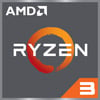
|
AMD Ryzen 3 7320U
4C 8T @ 4.10 GHz |
||

|
AMD EPYC 7302P
16C 32T @ 3.30 GHz |
||
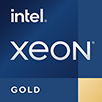
|
Intel Xeon Gold 6140
18C 36T @ 3.70 GHz |
||
Geekbench 5, 64bit (Multi-Core)
Geekbench 5 is a cross plattform benchmark that heavily uses the systems memory. A fast memory will push the result a lot. The multi-core test involves all CPU cores and taks a big advantage of hyperthreading.

|
Qualcomm Snapdragon 7 Gen 1
6C 6T @ 2.40 GHz |
||
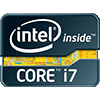
|
Intel Core i7-3820QM
4C 8T @ 2.70 GHz |
||
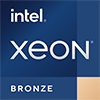
|
Intel Xeon Bronze 3104
6C 6T @ 1.70 GHz |
||
|
|
Google Tensor
8C 8T @ 2.80 GHz |
||

|
Intel Core i5-4690
4C 4T @ 3.70 GHz |
||

|
Intel Core i7-3610QE
4C 8T @ 3.00 GHz |
||

|
Intel Xeon D-1622
4C 8T @ 3.00 GHz |
||
Geekbench 6 (Single-Core)
Geekbench 6 is a benchmark for modern computers, notebooks and smartphones. What is new is an optimized utilization of newer CPU architectures, e.g. based on the big.LITTLE concept and combining CPU cores of different sizes. The single-core benchmark only evaluates the performance of the fastest CPU core, the number of CPU cores in a processor is irrelevant here.

|
Intel Core i7-7740X
4C 8T @ 4.50 GHz |
||

|
Intel Core i7-10710U
6C 12T @ 4.70 GHz |
||

|
Qualcomm Snapdragon 7+ Gen 2
8C 8T @ 2.91 GHz |
||
|
|
Google Tensor
8C 8T @ 2.80 GHz |
||
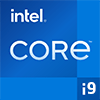
|
Intel Core i9-9980HK
8C 16T @ 5.00 GHz |
||

|
Intel Core i5-10400H
4C 8T @ 4.60 GHz |
||
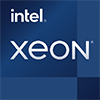
|
Intel Xeon W-2145
8C 16T @ 4.50 GHz |
||
Geekbench 6 (Multi-Core)
Geekbench 6 is a benchmark for modern computers, notebooks and smartphones. What is new is an optimized utilization of newer CPU architectures, e.g. based on the big.LITTLE concept and combining CPU cores of different sizes. The multi-core benchmark evaluates the performance of all of the processor's CPU cores. Virtual thread improvements such as AMD SMT or Intel's Hyper-Threading have a positive impact on the benchmark result.

|
Intel Core i7-4850HQ
4C 8T @ 3.50 GHz |
||
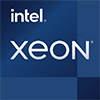
|
Intel Xeon E5-2620 v2
6C 12T @ 2.30 GHz |
||
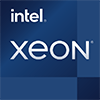
|
Intel Xeon E3-1220 v5
4C 4T @ 3.30 GHz |
||
|
|
Google Tensor
8C 8T @ 2.80 GHz |
||

|
Intel Core i7-4950HQ
4C 8T @ 2.40 GHz |
||

|
Intel Core i7-4722HQ
4C 8T @ 2.40 GHz |
||

|
Intel Core i5-5675R
4C 4T @ 3.30 GHz |
||
iGPU - FP32 Performance (Single-precision GFLOPS)
The theoretical computing performance of the internal graphics unit of the processor with simple accuracy (32 bit) in GFLOPS. GFLOPS indicates how many billion floating point operations the iGPU can perform per second.
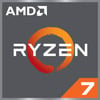
|
AMD Ryzen 7 5700U
AMD Radeon RX Vega 8 (Renoir) @ 1.90 GHz |
||
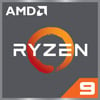
|
AMD Ryzen 9 5900HX
AMD Radeon RX Vega 8 (Renoir) @ 1.90 GHz |
||

|
AMD Ryzen 9 5980HX
AMD Radeon RX Vega 8 (Renoir) @ 1.90 GHz |
||
|
|
Google Tensor
ARM Mali-G78 MP20 @ 0.76 GHz |
||
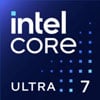
|
Intel Core Ultra 7 155UL
Intel Iris Xe 4 Core Graphics 64 EUs (Meteor Lake) @ 1.95 GHz |
||

|
Intel Core Ultra 7 155U
Intel Iris Xe 4 Core Graphics 64 EUs (Meteor Lake) @ 1.95 GHz |
||

|
Intel Core i7-1165G7
Intel Iris Xe Graphics 96 (Tiger Lake) @ 1.30 GHz |
||
AnTuTu 9 Benchmark
The AnTuTu 9 benchmark is very well suited to measuring the performance of a smartphone. AnTuTu 9 is quite heavy on 3D graphics and can now also use the "Metal" graphics interface. In AnTuTu, memory and UX (user experience) are also tested by simulating browser and app usage. AnTuTu version 9 can compare any ARM CPU running on Android or iOS. Devices may not be directly comparable when benchmarked on different operating systems.
In the AnTuTu 9 benchmark, the single-core performance of a processor is only slightly weighted. The rating is made up of the multi-core performance of the processor, the speed of the working memory, and the performance of the internal graphics.
In the AnTuTu 9 benchmark, the single-core performance of a processor is only slightly weighted. The rating is made up of the multi-core performance of the processor, the speed of the working memory, and the performance of the internal graphics.

|
Qualcomm Snapdragon 870
8C 8T @ 3.20 GHz |
||
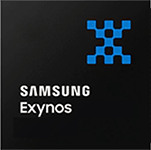
|
Samsung Exynos 2100
8C 8T @ 2.90 GHz |
||

|
Qualcomm Snapdragon 865+
8C 8T @ 3.10 GHz |
||
|
|
Google Tensor
8C 8T @ 2.80 GHz |
||
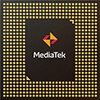
|
MediaTek Dimensity 1300
8C 8T @ 3.00 GHz |
||

|
MediaTek Dimensity 1200
8C 8T @ 3.00 GHz |
||

|
Qualcomm Snapdragon 865
8C 8T @ 2.84 GHz |
||
AnTuTu 8 Benchmark
The AnTuTu 8 Benchmark measures the performance of a SoC. AnTuTu benchmarks the CPU, GPU, Memory as well as the UX (User Experience) by simulating browser and app usage. AnTuTu can benchmark any ARM CPU that runs under Android or iOS. Devices may not be directly compareable if the benchmark has been performed under different operating systems.
In the AnTuTu 8 benchmark, the single-core performance of a processor is only slightly weighted. The evaluation consists of the multi-core performance of the processor, the speed of the RAM and the performance of the internal graphics.
In the AnTuTu 8 benchmark, the single-core performance of a processor is only slightly weighted. The evaluation consists of the multi-core performance of the processor, the speed of the RAM and the performance of the internal graphics.
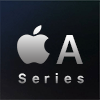
|
Apple A14 Bionic
6C 6T @ 3.00 GHz |
||

|
MediaTek Dimensity 1200
8C 8T @ 3.00 GHz |
||

|
Qualcomm Snapdragon 865+
8C 8T @ 3.10 GHz |
||
|
|
Google Tensor
8C 8T @ 2.80 GHz |
||

|
Samsung Exynos 2100
8C 8T @ 2.90 GHz |
||

|
Qualcomm Snapdragon 865
8C 8T @ 2.84 GHz |
||

|
Qualcomm Snapdragon 860
8C 8T @ 2.96 GHz |
||
Performance for Artificial Intelligence (AI) and Machine Learning (ML)
Processors with the support of artificial intelligence (AI) and machine learning (ML) can process many calculations, especially audio, image and video processing, much faster than classic processors. The performance is given in the number (trillions) of arithmetic operations per second (TOPS).

|
Qualcomm Snapdragon 665
8C 8T @ 2.00 GHz |
||

|
Qualcomm Snapdragon 670
8C 8T @ 2.00 GHz |
||

|
Qualcomm Snapdragon 8cx
8C 8T @ 2.84 GHz |
||
|
|
Google Tensor
8C 8T @ 2.80 GHz |
||
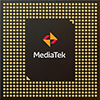
|
MediaTek Helio G99
8C 8T @ 2.20 GHz |
||

|
Apple A11 Bionic
6C 6T @ 2.39 GHz |
||

|
MediaTek MT8183
8C 8T @ 2.00 GHz |
||
Benchmarks

Geekbench 5 (SC)
2,488 entries
2,488 entries

Geekbench 5 (MC)
2,461 entries
2,461 entries

Geekbench 6 (SC)
1,755 entries
1,755 entries

Geekbench 6 (MC)
1,703 entries
1,703 entries

FP32 SP (iGPU)
2,042 entries
2,042 entries

AnTuTu 9 Benchmark
90 entries
90 entries

AnTuTu 8 Benchmark
118 entries
118 entries

Geekbench 3 (SC)
942 entries
942 entries

Geekbench 3 (MC)
938 entries
938 entries

AI / ML Performance
119 entries
119 entries
Description of the processor
The Google Tensor is a 64-bit system-on-a-chip (SOC) processor developed by the American company Google. It was released in the fourth quarter of 2021 and was used in Googles own smartphones Google Pixel 6, Google Pixel 6 Pro and Google Pixel 6a. The Google Tensor is the first generation of Tensor processors and is manufactured with a structure width of 5 nanometers. With the Google Tensor G2, the successor to the first generation came in 2022, which will be installed in the Google Pixel 7.The Google Tensor is based on a hybrid Prime big.LITTLE core architecture and has a total of eight processor cores. These are divided into 2 prime cores, 2 performance cores and 4 efficiency cores. The two prime cores clock at up to 2.80 gigahertz and are based on an ARM Cortex-X1 core. The two performance cores are based on the ARM Cortex-A76 and clock at up to 2.25 gigahertz. The four efficiency cores, which are used when no computing power is needed to extend the battery life of the smartphone, are based on the ARM Cortex-A55 and clock at a maximum of 1.80 gigahertz.
With the Google Tensor AI (Google Edge TPU with 1.6 TOPS performance), special hardware is built into the Google Tensor, which supports the calculation of AI or ML in hardware.
The internal graphics unit in the Google Tensor is the ARM Mali-G78 with 20 execution units. This iGPU has a total of 320 shader units and clocks at up to 760 megahertz; the graphics unit does not have a turbo mode. It achieves an FP32 computing power of 1943 GigaFLOPS, with single precision. The ARM Mail-G78 is manufactured with a structure width of 5 nanometers and comes from the Valhall 2 generation.
The Google Tensor G1 was equipped with up to 12 gigabytes of LPDDR5-5500 memory and has 2 memory channels.
Popular comparisons
back to index






